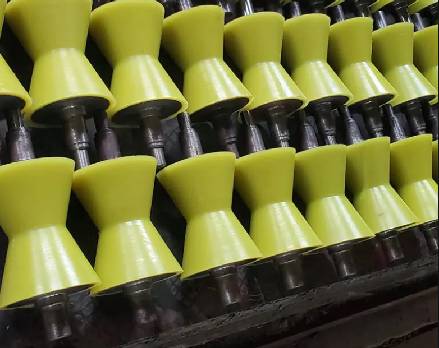 Afrikaans
Afrikaans  Albanian
Albanian  Amharic
Amharic  Arabic
Arabic  Armenian
Armenian  Azerbaijani
Azerbaijani  Basque
Basque  Belarusian
Belarusian  Bengali
Bengali  Bosnian
Bosnian  Bulgarian
Bulgarian  Catalan
Catalan  Cebuano
Cebuano  Corsican
Corsican  Croatian
Croatian  Czech
Czech  Danish
Danish  Dutch
Dutch  English
English  Esperanto
Esperanto  Estonian
Estonian  Finnish
Finnish  French
French  Frisian
Frisian  Galician
Galician  Georgian
Georgian  German
German  Greek
Greek  Gujarati
Gujarati  Haitian Creole
Haitian Creole  hausa
hausa  hawaiian
hawaiian  Hebrew
Hebrew  Hindi
Hindi  Miao
Miao  Hungarian
Hungarian  Icelandic
Icelandic  igbo
igbo  Indonesian
Indonesian  irish
irish  Italian
Italian  Japanese
Japanese  Javanese
Javanese  Kannada
Kannada  kazakh
kazakh  Khmer
Khmer  Rwandese
Rwandese  Korean
Korean  Kurdish
Kurdish  Kyrgyz
Kyrgyz  Lao
Lao  Latin
Latin  Latvian
Latvian  Lithuanian
Lithuanian  Luxembourgish
Luxembourgish  Macedonian
Macedonian  Malgashi
Malgashi  Malay
Malay  Malayalam
Malayalam  Maltese
Maltese  Maori
Maori  Marathi
Marathi  Mongolian
Mongolian  Myanmar
Myanmar  Nepali
Nepali  Norwegian
Norwegian  Norwegian
Norwegian  Occitan
Occitan  Pashto
Pashto  Persian
Persian  Polish
Polish  Portuguese
Portuguese  Punjabi
Punjabi  Romanian
Romanian  Russian
Russian  Samoan
Samoan  Scottish Gaelic
Scottish Gaelic  Serbian
Serbian  Sesotho
Sesotho  Shona
Shona  Sindhi
Sindhi  Sinhala
Sinhala  Slovak
Slovak  Slovenian
Slovenian  Somali
Somali  Spanish
Spanish  Sundanese
Sundanese  Swahili
Swahili  Swedish
Swedish  Tagalog
Tagalog  Tajik
Tajik  Tamil
Tamil  Tatar
Tatar  Telugu
Telugu  Thai
Thai  Turkish
Turkish  Turkmen
Turkmen  Ukrainian
Ukrainian  Urdu
Urdu  Uighur
Uighur  Uzbek
Uzbek  Vietnamese
Vietnamese  Welsh
Welsh  Bantu
Bantu  Yiddish
Yiddish  Yoruba
Yoruba  Zulu
Zulu bearing housing types
Bearing Housing Types An Overview
Bearing housings play a crucial role in the functionality and efficiency of machinery across various industries. These components provide support and protection to bearings, ensuring that they operate smoothly and effectively. Understanding the different types of bearing housings is essential for engineers, mechanics, and anyone involved in equipment maintenance. Here, we explore the various types of bearing housings, their characteristics, and their applications.
1. Plummer Blocks (Pillow Blocks)
Plummer blocks, often referred to as pillow blocks, are one of the most common types of bearing housings. These units feature a housing that can accommodate a shaft with bearings installed inside. This design allows for easy installation and maintenance. Plummer blocks are often made from cast iron or aluminum, providing strength and durability. They are used in numerous applications, including conveyors, fans, and pumps, where robust support is necessary.
2. Flanged Bearing Housings
Flanged bearing housings are designed with a mounting flange on one or both sides, allowing for secure attachment to a surface. This type of housing is particularly useful in applications where space constraints require a compact design. Flanged housings can accommodate different bearing types, making them versatile. They are commonly used in industrial machinery, agricultural equipment, and automotive applications.
bearing housing types

Split bearing housings come in two parts, allowing for easy access to the bearings without removing the entire assembly from the machine. This feature significantly reduces downtime during maintenance. Split housings are ideal for larger machinery and applications where space limitations make traditional housing methods less feasible. Industries such as mining, construction, and heavy manufacturing frequently employ this type of bearing housing due to its ease of use and efficiency.
4. Cartridge Bearing Housings
Cartridge bearing housings are designed to house pre-assembled bearings that are easy to replace. This modularity simplifies the maintenance process and reduces the risk of misalignment during installation. They are often used in applications where vibration or contamination can affect bearing performance. This makes cartridge housings a popular choice in food processing, pharmaceuticals, and chemical manufacturing industries.
5. End Caps
End caps are specialized bearing housings that are typically used in applications where bearings need to be protected from environmental factors such as dust, moisture, and temperature fluctuations. With seals and protective barriers, end caps enhance the bearing's lifespan. They are commonly used in automotive applications, home appliances, and outdoor machinery.
Conclusion
The choice of bearing housing is vital for the performance and longevity of bearings in machinery. Each type of bearing housing—whether it’s plummer blocks, flanged, split, cartridge, or end caps—offers unique benefits that cater to specific application requirements. By understanding these types and their appropriate use, engineers and maintenance personnel can ensure optimal machinery performance and minimize downtime. Ultimately, selecting the right bearing housing type is a key factor in achieving operational efficiency and reliability in various industrial applications.
-
Revolutionizing Conveyor Reliability with Advanced Rubber Lagging PulleysNewsJul.22,2025
-
Powering Precision and Durability with Expert Manufacturers of Conveyor ComponentsNewsJul.22,2025
-
Optimizing Conveyor Systems with Advanced Conveyor AccessoriesNewsJul.22,2025
-
Maximize Conveyor Efficiency with Quality Conveyor Idler PulleysNewsJul.22,2025
-
Future-Proof Your Conveyor System with High-Performance Polyurethane RollerNewsJul.22,2025
-
Driving Efficiency Forward with Quality Idlers and RollersNewsJul.22,2025





























